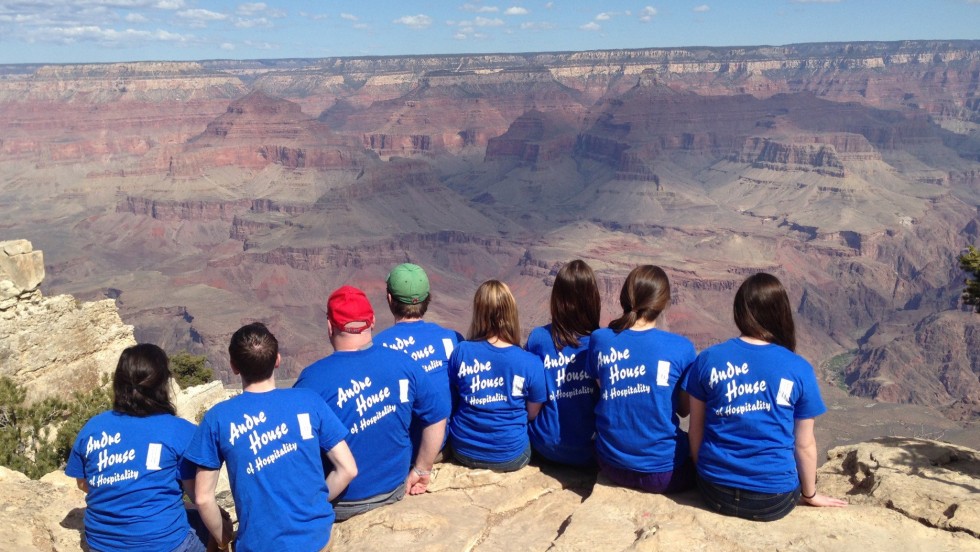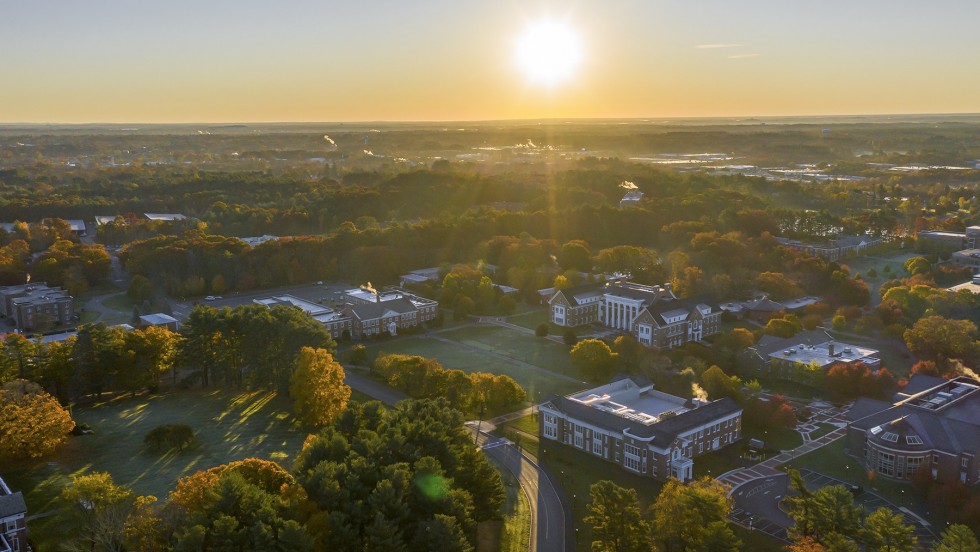Staff leader sees students transform through H.O.P.E. immersion
At a preserve on sacred Wabanaki land in Maine, the history, traditions, and struggles of Indigenous People in North America come to life.
As an alumna of Stonehill and the H.O.P.E. program, it brought me so much joy to join a H.O.P.E. immersion earlier this year, my second such experience as a staff leader. In both cases, I returned with lessons learned both from the community I’ve been immersed in and from the students who have been a part of it. It is truly incredible to be a part of an institution that encourages their employees to join students in engaging communities all around the world through these powerful immersions.
MaryAnne Davey, the Assistant Director of Campus Ministry, has a magical way of placing staff on impactful experiences. This year, I was so blessed to be able to join H.O.P.E. Maine on their immersion at Nibezun, a preserve that resides on sacred Wabanaki land along the Penobscot River.
Working with International Partners in Mission (IPM), this immersion explores the topic of land rights, water rights, and the history of the Wabanaki Confederacy—a confederation of five First Nations and Native American nations, the Mi’kmaq, Passamaquoddy, Penobscot, Maliseet, and Abenaki. A crucial part of this immersion is staying at Nibezun, whose mission is to preserve and promote the ceremonies, traditions, customs, and language of the Confederacy.
Transformative listening
On this immersion, the most powerful activity we did was listen. We listened to stories about the founding of Nibezun, the incredible 12,000-year history of the Penobscot and Passamaquoddy Nations, and powerful stories of Standing Rock and the Missing and Murdered Indigenous Women movement. We learned together how to separate these powerful, deeply personal stories from the lessons they offer, so that we can respectfully share the importance of Indigenous Rights while ensuring those stories continue to be told only by the people and communities who experience them.
In the students, I saw a transformation. They grappled with their own privilege—as did I. I saw leadership emerge in all of them, and as they listened and shared their insight, I learned from them. I witnessed them ask important questions, some of which were answered, and yet at the end of our immersion they were left with many more. Each day, they impressed me by pushing through the tiredness and fatigue of being a college student to be present with the people we encountered on our journey.
Katie Palms ‘22, Lexie Braun ‘22, Joanna Vodola ‘20, Brenna Kueter ‘21, and Chanel Mazzone ’16 braid sweetgrass, a Wabanaki Tradition.
Education and community
Joanna Vodola ’20, the H.O.P.E. group’s leader, reflects, “the people and community we encountered really opened my eyes to the resiliency of the human spirit. It’s incredible to think that after hundreds of years of oppression Native Peoples; including the Abenaki, Passamaquoddy, Mi’kmaq, Maliseet, and Penobscot tribes; are stilling fighting for the right to be seen and treated as equals in the United States and throughout the world.”
I’m proud of these students for the work they did to educate themselves on the injustices faced by Indigenous Peoples. I’m proud of them for bringing forth the light in so many ways, too, through the endless amount of Bananagrams we played, in making homemade gnocchi together, and in their commitment to making maple syrup with Stanley Neptune, one of the founding members of Nibezun.
Lessons learned
Personally, this immersion has given me much to reflect on. It has changed how I view history, government, and the environment—the latter of which is so deeply connected to the rights of the Indigenous People. I have immense gratitude for Stonehill’s H.O.P.E. program and the opportunity it gave me to connect with powerful leaders in the Wabanaki Confederacy and the stories of history, oppression, and activism they shared with our group. I left Maine knowing that this immersion is start of my journey to becoming an ally to Indigenous Peoples.
I’d like to end with a Land Acknowledgement, which we said every morning in honor of the sacred land we were staying on.
Land Acknowledgement
We make this acknowledgement aware of the continual violations of water, territorial rights, and sacred sites in the Wabanaki homeland. We are honored to walk upon this sacred land with open hearts grateful for the stories and information shared with us.”
Of the many lessons I’ve been given on this experience, one that I’d like to share is to know which Indigenous Tribe inhabited or inhabits that land you spend your time on. As a reminder, Stonehill resides on Wampanoag Land and our land acknowledgement continues to be highlighted by the College’s Department of Archives and Historical Collections.
Chanel Mazzone ’16 is a Development Associate at the College.

